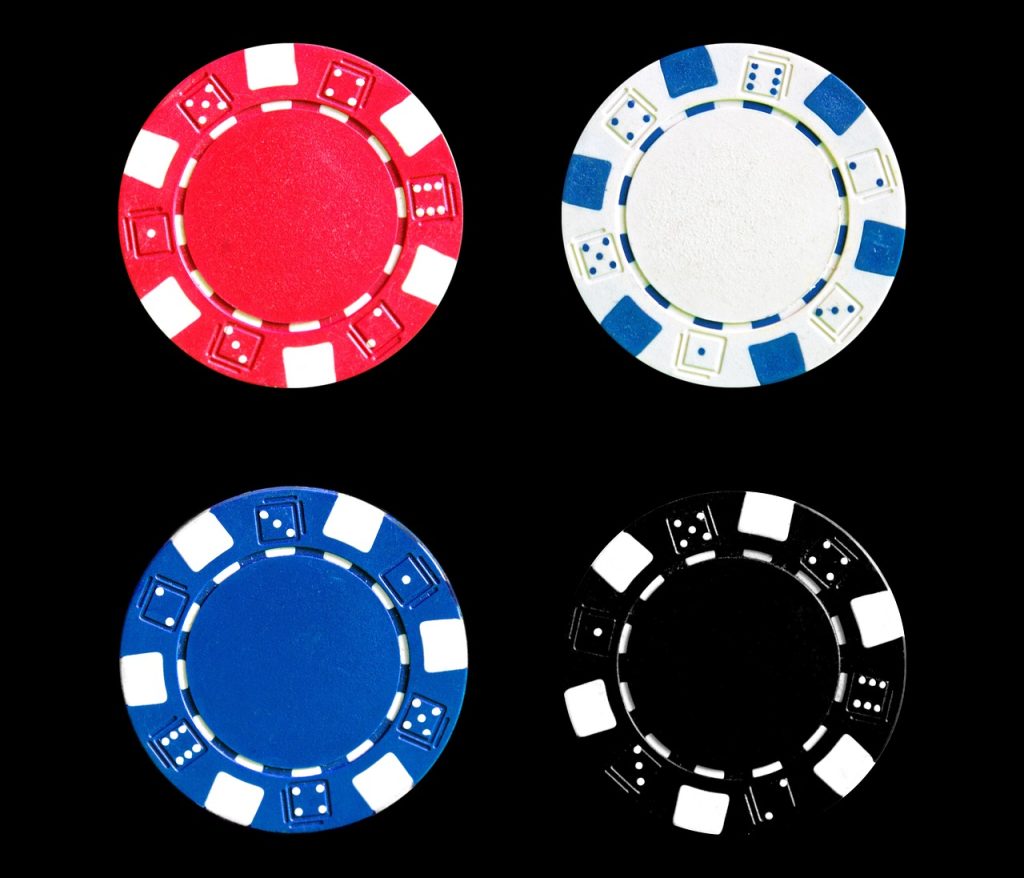1. Introduction: Understanding the Significance of Hand Selection in Poker
In the game of poker, one of the most critical skills a player must possess is the ability to select starting hands wisely. Hand selection sets the foundation for every poker hand and significantly impacts a player’s long-term profitability. Choosing the right hands to play, based on various factors such as position, hand strength, and opponent tendencies, can make the difference between winning and losing. In this article, we will delve into the art of hand selection in poker, providing valuable tips and strategies to help you make informed decisions and optimize your chances of success at the poker table. By honing your hand selection skills, you can gain a significant edge in this game of skill and strategy.
1. Introduction: Understanding the Significance of Hand Selection in Poker
1.1 The Importance of Hand Selection in Poker
In the game of poker, hand selection is like choosing the right ingredients for a recipe. Just as a chef carefully selects the freshest produce and finest spices, a poker player must choose their starting hands wisely. Your opening hand sets the stage for the rest of the game, and making smart choices can greatly increase your chances of coming out on top.
1.2 Impact of Hand Selection on Long-Term Profitability
Choosing the right starting hands isn’t just about winning individual pots; it’s about maximizing your long-term profitability. By consistently making good hand selection decisions, you’ll be putting yourself in favorable situations more often, leading to more winning sessions and bigger profits over time. So, let’s dive into the art of hand selection and discover some tips to improve your game.
2. Evaluating Your Position: How to Adjust Your Starting Hand Criteria
2.1 Understanding the Concept of Position in Poker
In poker, your position at the table has a big impact on your starting hand criteria. The later you act in a betting round, the more information you have about your opponents’ actions before you. This knowledge allows you to make more informed decisions and potentially play a wider range of hands.
2.2 Early Position: Tightening Your Starting Hand Range
When you’re in an early position at the table, it’s important to be cautious with your starting hand selection. The lack of information about your opponents’ intentions makes it riskier to play marginal hands. Stick to premium holdings like big pairs and strong suited connectors to avoid getting into sticky situations.
2.3 Middle Position: Expanding Your Starting Hand Range
As you move to middle position, you can begin to open up your starting hand range slightly. With a few players already having acted, you have a better sense of the table dynamics. Look for opportunities to play hands like suited aces, medium pairs, and suited connectors, but proceed with caution if facing strong action.
2.4 Late Position: Taking Advantage of the Button and Cut-off
Finally, when you’re on the button or cut-off, it’s time to get a little adventurous with your starting hand selection. With the advantage of acting last in the betting rounds, you can play a wider range of hands, including suited connectors, suited one-gappers, and even some weaker holdings like suited connectors or small pairs, depending on the table dynamics.
3. Understanding Hand Strength: Identifying and Assessing Powerful Starting Hands
3.1 The Hierarchy of Hand Strength in Poker
Not all starting hands are created equal. Understanding the hierarchy of hand strength is crucial in making informed decisions. Premium hands like pocket aces, kings, and queens sit at the top, while hands with good potential like suited connectors and strong high cards have their own value.
3.2 Premium Hands: Analyzing Pocket Aces, Kings, and Queens
Pocket aces, kings, and queens are the holy trinity of starting hands. These big pairs give you a high chance of winning pre-flop and can dominate opponents when they hit the board. Use them to your advantage by playing aggressively and extracting maximum value from your opponents.
3.3 Strong Connectors: Evaluating Suited and Connected Hands
Suited connectors and connected hands have great potential for making powerful hands like straights and flushes. These hands can often win big pots when they connect with the board. Just be mindful of your position and the table dynamics, as these hands can be vulnerable against strong pre-flop raises.
3.4 Assessing the Value of High Card Hands and Pairs
Even high card hands and pairs have their value, especially when suited or in late position. While they may not have the same firepower as premium hands, they can still win you pots and generate profits if played smartly. Don’t underestimate the power of a well-timed bluff or a skillful post-flop play with these hands.
4. Playing Tight: The Benefits of Selecting a Narrow Range of Premium Hands
4.1 The Advantages of a Tight Starting Hand Strategy
Playing a tight starting hand range has numerous benefits. You’ll be entering pots with stronger hands, increasing your chances of winning. Additionally, it becomes easier to read your opponents when you have a smaller range, allowing you to make better post-flop decisions.
4.2 Maximizing Profits with Premium Hands
With a tight starting hand strategy, you’ll naturally be playing more premium hands. This means you’ll have more opportunities to extract maximum value from your opponents when you do hit the board. Be sure to build the pot and make your opponents pay to see the next card when you have a strong hand.
4.3 Avoiding Costly Mistakes with Marginal Hands
By playing a narrow range of premium hands, you’ll also avoid getting into tough spots with marginal hands that can lead to costly mistakes. It’s easy to get attached to a hand that looks promising but is actually a recipe for disaster. Leave those marginal hands for your opponents to tangle with while you focus on solid, profitable play.
Remember, hand selection is an art that requires a combination of skill and discipline. By understanding the significance of hand selection, adjusting your starting hand criteria based on your position, assessing hand strength, and playing tight when necessary, you’ll be well on your way to becoming a masterful hand picker in the game of poker. Good luck and may the flop be ever in your favor!
5. Exploiting Opponents: Adjusting Your Hand Selection Based on Player Tendencies
5.1 Observing and Profiling Your Opponents
To make the most out of your hand selection, it’s crucial to pay attention to your opponents at the poker table. Watch their actions closely, noting how they play their hands and their overall tendencies. Are they tight or loose? Aggressive or passive? By observing and profiling your opponents, you can gain valuable insights into their playing style.
5.2 Tight and Passive Opponents: Exploiting Their Weaknesses
When facing tight and passive opponents, it’s important to exploit their predictable playing style. These players tend to play fewer hands and are less likely to bluff. As a result, you can loosen up your hand selection and play more aggressively against them. Take advantage of their cautious nature by stealing pots with well-timed bets and bluffing more frequently.
5.3 Loose and Aggressive Opponents: Using Selective Hand Selection as a Defense
Dealing with loose and aggressive opponents can be a challenge, as they often put pressure on you with their relentless betting. In these situations, it’s crucial to exercise caution and adjust your hand selection accordingly. Focus on playing strong hands and avoid getting caught up in their aggressive plays. By being selective with your starting hands, you can minimize losses and capitalize on their aggression when you have a solid hand.
6. The Power of Position: Leveraging Your Position to Enhance Hand Selection
6.1 The Strategic Advantage of Late Position
Position is a powerful tool in poker, and being in late position provides numerous advantages. When you have the dealer button or are close to it, you have more information about your opponents’ actions before you make decisions. This knowledge allows you to make more informed choices about hand selection. In late position, you can afford to play a wider range of hands, including some weaker ones, as you have more control over the hand’s development.
6.2 Playing Marginal Hands in Position
In poker, not all hands are created equal. Marginal hands can become more playable when you have the advantage of being in position. With greater maneuverability and the ability to extract more value from your opponents, you can consider playing these hands when in late position. However, it’s important to be cautious and adjust your strategy based on the tendencies of your opponents.
6.3 Bluffing Opportunities from Late Position
Late position not only offers you the luxury of better hand selection but also provides increased bluffing opportunities. When the action has been checked to you, and your opponents show signs of weakness, it may be an ideal time to bluff. By leveraging your position, you can apply pressure on your opponents and win pots without having the best hand. However, bluff selectively and always be mindful of the current dynamics at the table.
Remember, mastering the art of hand selection requires practice, observation, and adaptability. By exploiting your opponents’ tendencies and using your position wisely, you can make more informed decisions and increase your chances of success at the poker table. Good luck, and may the cards be ever in your favor!
By mastering the art of hand selection in poker, you can greatly improve your overall game and increase your chances of success. Remember to consider factors such as position, hand strength, opponent tendencies, and game dynamics when making your starting hand decisions. Continuously refine your hand selection skills through practice and experience, and be aware of common mistakes to avoid. With a solid hand selection strategy, you will be able to navigate the complexities of poker more effectively and make more profitable decisions. So, next time you sit down at the poker table, choose your starting hands wisely and let your strategic hand selection guide you towards victory. Good luck!
FAQ
1. Why is hand selection important in poker?
Hand selection is crucial in poker because it determines the starting point of every hand and significantly impacts your long-term profitability. Choosing strong starting hands can give you an advantage over opponents and increase your chances of winning.
2. How does position affect hand selection?
Position refers to where you are seated at the poker table relative to the dealer button. Your position affects hand selection because it determines the order in which you act during a hand. The later your position, the more information you have about your opponents’ actions, allowing for more strategic hand selection.
3. Should I always play premium hands?
While premium hands like pocket aces and kings have a higher chance of winning, it is not advisable to only play those hands. It is important to have a balanced range of starting hands to keep opponents guessing and avoid predictability. Suited connectors and high-card hands can also be profitable in certain situations.
4. How can I exploit my opponents’ tendencies through hand selection?
Observing your opponents’ playing style and tendencies can help you adjust your hand selection accordingly. If you notice a tight and passive player, you can play more aggressively and widen your starting hand range to exploit their cautiousness. Against loose and aggressive players, selecting strong hands and playing more selectively can help you counter their aggression.







Facebook Comments